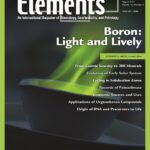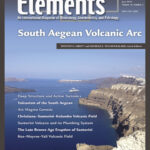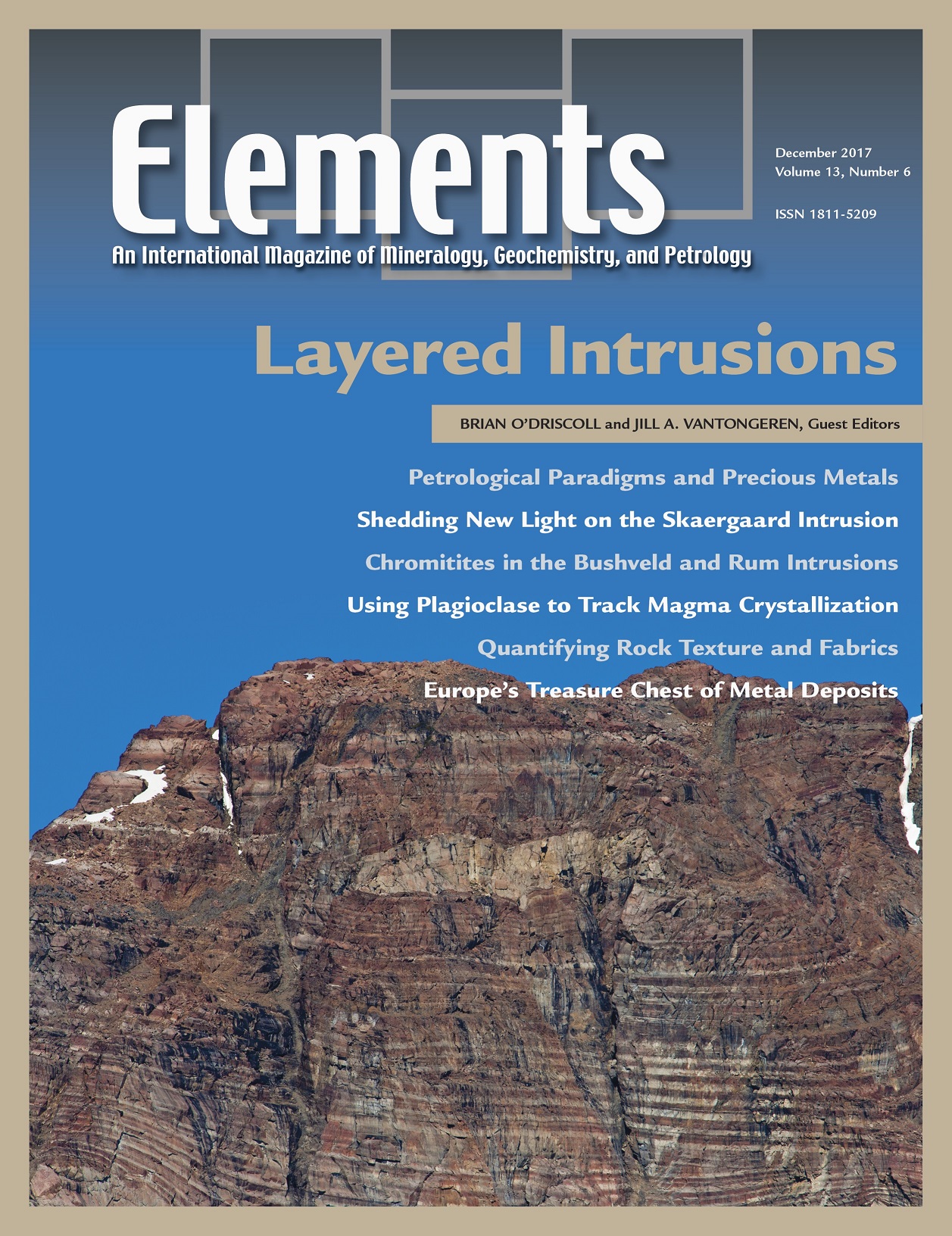
Boron: Light And Lively, August 2017, Vol. 13, No. 4
June 28, 2024
South Aegean Volcanic Arc, June 2019, Vol. 15, No. 3
June 28, 2024Layered Intrusions, December 2017, Vol. 13, No. 6
$20.00
For more than 50 years, layered mafic-ultramafic intrusions have served as natural laboratories for studying magma chamber processes and magmatic differentiation. Further enhancing our understanding of layered intrusion formation will yield valuable insights into the solidification of magmatic systems, the formation of precious metal deposits, and the timescales over which substantial crust-forming episodes occur.
Layered Intrusions
December 2017, Vol. 13, No. 6
For more than 50 years, layered mafic-ultramafic intrusions have served as natural laboratories for studying magma chamber processes and magmatic differentiation. Further enhancing our understanding of layered intrusion formation will yield valuable insights into the solidification of magmatic systems, the formation of precious metal deposits, and the timescales over which substantial crust-forming episodes occur. The aims of this issue of Elements are to offer an overview of the state-of-the-art in the petrology of layered intrusions today and a look forward to the future challenges in the field.
Why You’ll Love Elements Magazine:
- Expert Contributors: Articles written by renowned researchers in the field of geoscience.
- Engaging Content: Join a community of readers who are passionate about Elements.
- Exceptional Quality: Each issue is printed on high-quality paper with stunning visuals and detailed illustrations that bring complex scientific concepts to life.
Order your copy of the December 2017 issue of Elements magazine today and delve into layered intrusions.
Related products
-
The Nuclear Fuel Cycle – Environmental Aspects, December 2006, Vol. 2, No. 6
$20.00Increasing concerns for the effects of global warming that result from rising greenhouse gas concentrations in the atmosphere have led to a reexamination, even enthusiasm, for nuclear power. Of all the current alternatives to fossil fuels, nuclear fission is the most important source of energy, accounting for 17 percent of the world’s electricity.
-
Carbon Dioxide Sequestration, October 2008, Vol. 4, No. 5
$20.00Storage of carbon in the subsurface involves introduction of supercritical CO2 into rock formations beneath the surface of the Earth, typically at depths of 1000 to 4000 meters. Although CO2 is a relatively benign substance, the volume being considered is large.
-
Water On Mars, June 2006, Vol. 2, No. 3
$20.00During the past several decades, spacecraft data have transformed the planets from astronomical objects into geologic worlds. Mars is the current focus of planetary exploration, and NASA’s objectives for this effort are based on the theme, “follow the water.




